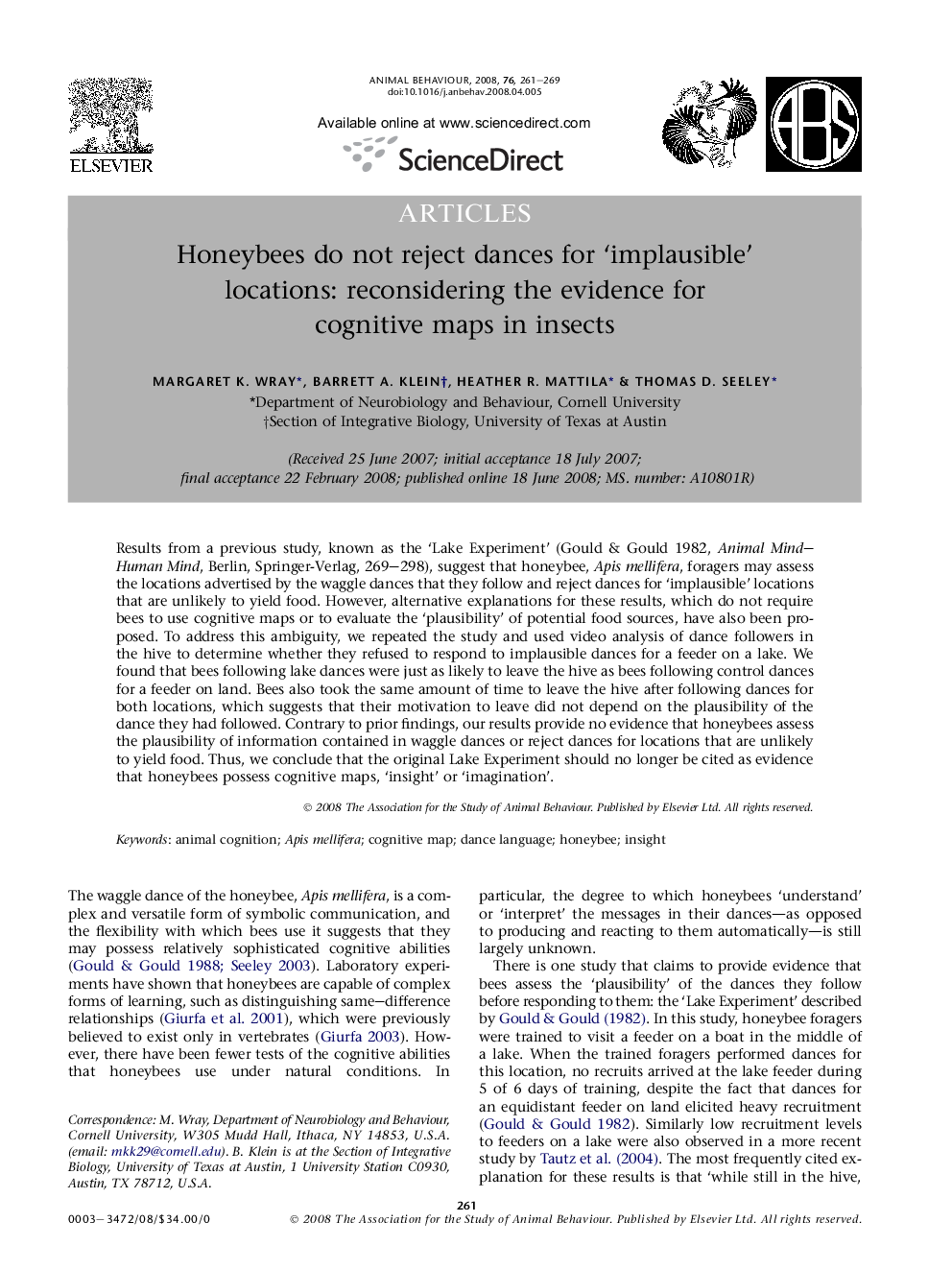| Article ID | Journal | Published Year | Pages | File Type |
|---|---|---|---|---|
| 2418861 | Animal Behaviour | 2008 | 9 Pages |
Results from a previous study, known as the ‘Lake Experiment’ (Gould & Gould 1982, Animal Mind–Human Mind, Berlin, Springer-Verlag, 269–298), suggest that honeybee, Apis mellifera, foragers may assess the locations advertised by the waggle dances that they follow and reject dances for ‘implausible’ locations that are unlikely to yield food. However, alternative explanations for these results, which do not require bees to use cognitive maps or to evaluate the ‘plausibility’ of potential food sources, have also been proposed. To address this ambiguity, we repeated the study and used video analysis of dance followers in the hive to determine whether they refused to respond to implausible dances for a feeder on a lake. We found that bees following lake dances were just as likely to leave the hive as bees following control dances for a feeder on land. Bees also took the same amount of time to leave the hive after following dances for both locations, which suggests that their motivation to leave did not depend on the plausibility of the dance they had followed. Contrary to prior findings, our results provide no evidence that honeybees assess the plausibility of information contained in waggle dances or reject dances for locations that are unlikely to yield food. Thus, we conclude that the original Lake Experiment should no longer be cited as evidence that honeybees possess cognitive maps, ‘insight’ or ‘imagination’.
